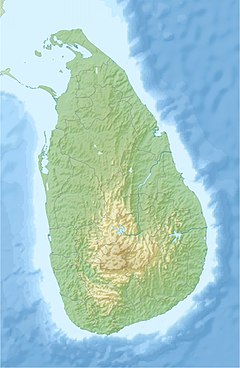Knuckles mountains
| Knuckles conservation forest | |
|---|---|

A view of the Knuckles mountain range
|
|
| Location | Central Province, Sri Lanka |
| Nearest city | Matale |
| Coordinates | 7°27′N 80°48′E / 7.450°N 80.800°ECoordinates: 7°27′N 80°48′E / 7.450°N 80.800°E |
| Governing body | Department of Forest Conservation |
| World Heritage Site | 2010 (within the site Central Highlands of Sri Lanka) |
| UNESCO World Heritage Site | |
|---|---|
| Location | Sri Lanka |
| Coordinates | 7°27′N 80°48′E / 7.45°N 80.8°E |
| Criteria | ix, x |
| Reference | 1203 |
| Inscription | 2010 ( Session) |
|
[]
|
|
The Knuckles Mountain Range lies in central Sri Lanka, in the Districts of Matale and Kandy. The range takes its name from a series of recumbent folds and peaks in the west of the massif which resemble the knuckles of clenched fist when viewed from certain locations in the Kandy District. Whilst this name was assigned by early British surveyors, the Sinhalese residents have traditionally referred to the area as Dumbara Kanduvetiya meaning Mist-laden Mountain Range (Cooray, 1984).
The higher montane area is often robed in thick layers of cloud. In addition to its aesthetic value, the range is of great scientific interest. It is a climatic microcosm of the rest of Sri Lanka as the conditions of all the climatic zones in the country are exhibited in the massif. At higher elevations there is a series of isolated cloud forests, harbouring a variety of flora and fauna. Although the range constitutes approximately 0.03% of the island’s total area, it is home to a significantly higher proportion of the country’s biodiversity. The isolated Knuckles range harbours several relict, endemic flora and fauna that are distinct from central massif. More than 34 percent of Sri Lanka's endemic trees, shrubs, and herbs are only found in these forests.
Cultivation of cardamom at large scale in the montane forests is a major threat to the fragile forest ecosystem.
Invasive exotic plant species such as Mist Flower (Ageratina riparia) that increasingly spread into montane forest areas and montane grasslands destroy the unique native Sri Lankan flora.
...
Wikipedia


